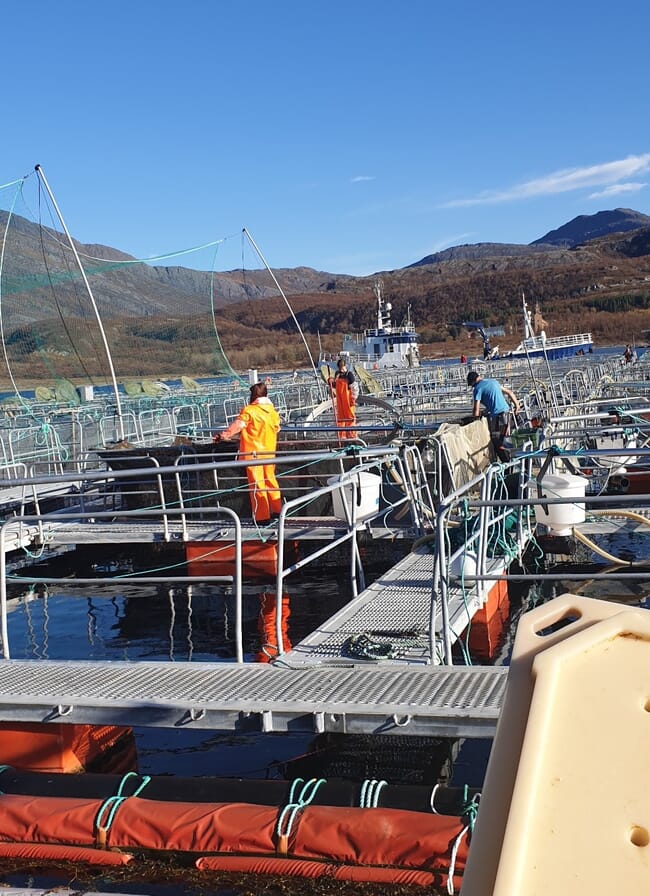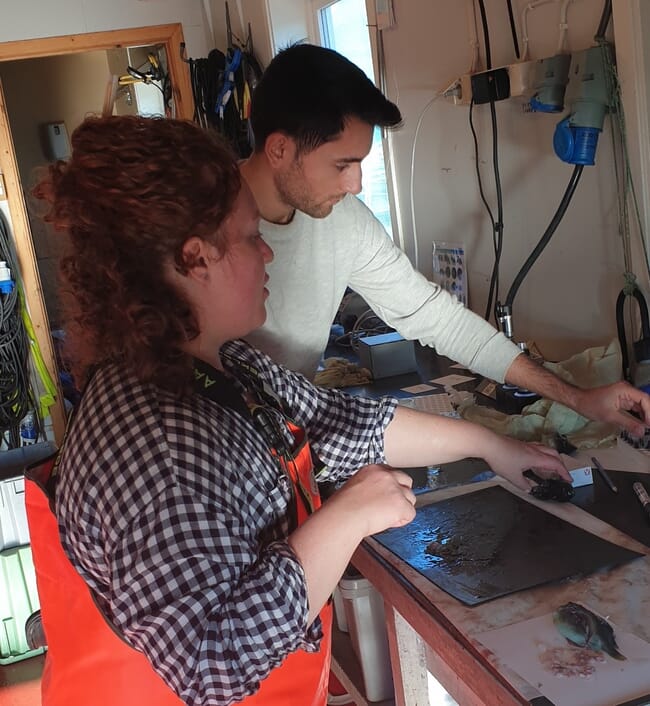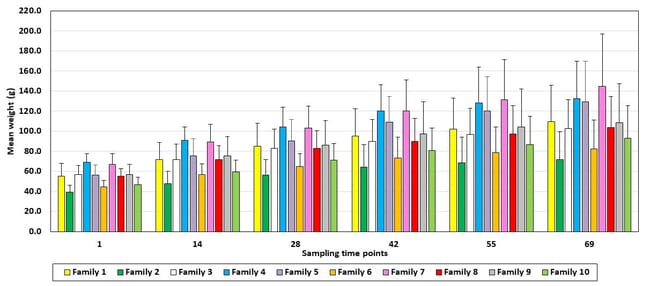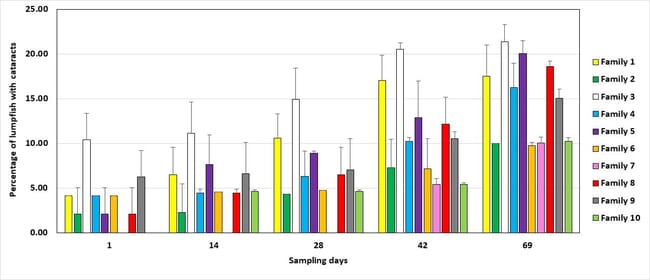
© GIFAS
Background
A study with 10 different half-sib lumpfish was performed in the small-scale R&D facilities at the Gildeskål Forskningsstasjon (GIFAS) in Norway to explore the potential genetic influence on the performance of key traits affecting lumpfish stocked in salmon farms.
This trial was part of a series of studies under a research programme on the selective breeding of lumpfish. Each study further explores the potential paternal influence and provides key information on specific behavioural, growth and health traits of great interest for the breeding programme.
Increasing resistance to chemotherapeutic agents by sea lice is driving the search for alternative approaches that can effectively minimise the impact caused by this group of ectoparasites. One of the most promising alternatives is the use of cleanerfish. In fact, the use of lumpfish as biological delousing agent has seen a remarkable growth in the past few years, with studies reporting up to 97 percent fewer adult female sea lice in salmon pens, found in a recent study between GIFAS and Akvaplan-Niva, where a link between lice-grazing preference and genetic composition was found. Parental influence on lumpfish behaviour regarding preference for natural food-sources such as sea lice has also been documented in previous studies.
Concerns over lumpfish welfare in salmon farms have been widely reported, as this species undergoes several stressful events during its life in aquaculture operations. Strategies such as supplementary health-boosting feeds, production of robust fish and optimised handling procedures can help to improve the welfare of lumpfish.
Expanding knowledge on the influence of genetics on the preference of lumpfish for sea lice and their health status opens the potential to design strategies such as breeding programmes that maximise the full sea lice grazing potential in salmon pens while safeguarding health.
The main objective of this study was to assess the grazing of different lumpfish families on sea lice found on Atlantic salmon in cages and investigate possible differences in growth, cataract prevalence and health of lumpfish with different parental backgrounds.

© GIFAS
Study design
Ten different lumpfish families with a 54.8g mean weight were distributed among ten sea cages (5 × 5 × 5 m), stocked with 400 Atlantic salmon each (621.4g mean weight). Each of the ten cages was stocked with 48 lumpfish – a 12 percent stocking density.
During the study, growth performance, health score, behaviour and stomach contents were recorded, as well as the sea lice infestation levels on the salmon stocked in each of the ten cages.
Key findings
Growth performance
At the start of the trial, families 2; 6 and 10 were the smallest. These differences were only due to genetic influence, as hatching occurred in the same period for all the families, and the rearing conditions were equal for all families.
Growth performance trended positively and was similar for all lumpfish families, though families 2; 6 and 10 remained the smallest groups, while families 4 and 7 had the highest mean weights, both at the start and the end of the trial (figure 1).
Previous studies have shown that smaller lumpfish exhibit a greater inclination for natural food sources, including sea lice – therefore a smaller average size is a desirable trait for selective breeding programmes.

Figure 1: mean weight calculated for each of the ten families at day 1, 14, 28, 42, 55 and 69. Values represent means ± S.D.
Cataract incidence
In this study, the incidence of cataracts increased throughout the study, with differences between families. Families 2; 6; 7 and 10 had the lowest prevalence (10 percent), while lumpfish from family 3 had the highest levels (21 percent; figure 2). Severity of cataracts was also different, being lowest in families 6 and 7. This gives a solid signal of genetic influence on cataract development of farmed lumpfish. This allows for the selection of lumpfish for breeding programmes with potentially lower cataract incidence.

Figure 2: occurrence of lumpfish with cataracts (percentage prevalence) calculated for each of the ten families at day 1, 14, 28, 42 and 69. Values represent means ± S.D.
Sea lice consumption
The results of the gastric lavages performed during the study have shown that lumpfish from families 2, 6 and 10 showed a continual consumption of pre-adult and adult L. salmonis sea lice, where family 10 had the highest consumption levels (figure 3A). This indicates that sea lice grazing preference may be genetically influenced to a certain degree.
Gastric lavages showed a high consumption of Caligus elongatus throughout the study, with 56 percent of the family 10 member having been found with ingested C. elongatus (figure 3B). This may indicate that consumption of this sea louse species can be genetically influenced, and the breeding of lumpfish with higher grazing preference of this particular species could be of interest for deployment in farms historically affected by it.

Figure 3 (A): percentage values of L. salmonis consumption of lumpfish of the ten lumpfish families sampled at each sampling time point and (B) percentage values of C. elongatus consumption for lumpfish of the ten lumpfish families sampled at each sampling time point. Values are presented as means ± S.D. A: sea lice (L. salmonis).
Health and welfare
Operational welfare indicators were developed for the fish used in this study, to follow the health status during the study, for all the ten families.
There was a general trend towards a slight deterioration in health as the study progressed. Fish from family 2 displayed the best health conditions by the end of the trial, indicating a potential genetic influence on health status.
Conclusion
The potential for a breeding programme with this particular species was shown by the clear differences found in terms of mean weight, cataract prevalence, feeding preferences and lice grazing between the ten families, indicating genetic influences.
Lumpfish from families 2, 6 and 10 had the lowest mean weights, higher sea lice grazing and exhibited natural feeding behaviour more frequently. In addition, the members of these three families revealed significantly lower levels of cataract prevalence compared to the other remaining families.
The study results point to a strong potential genetic influence on key desirable traits, with evident aquaculture applications that can benefit salmon farmers as well as safeguarding the health and welfare of these animals on salmon farms.



